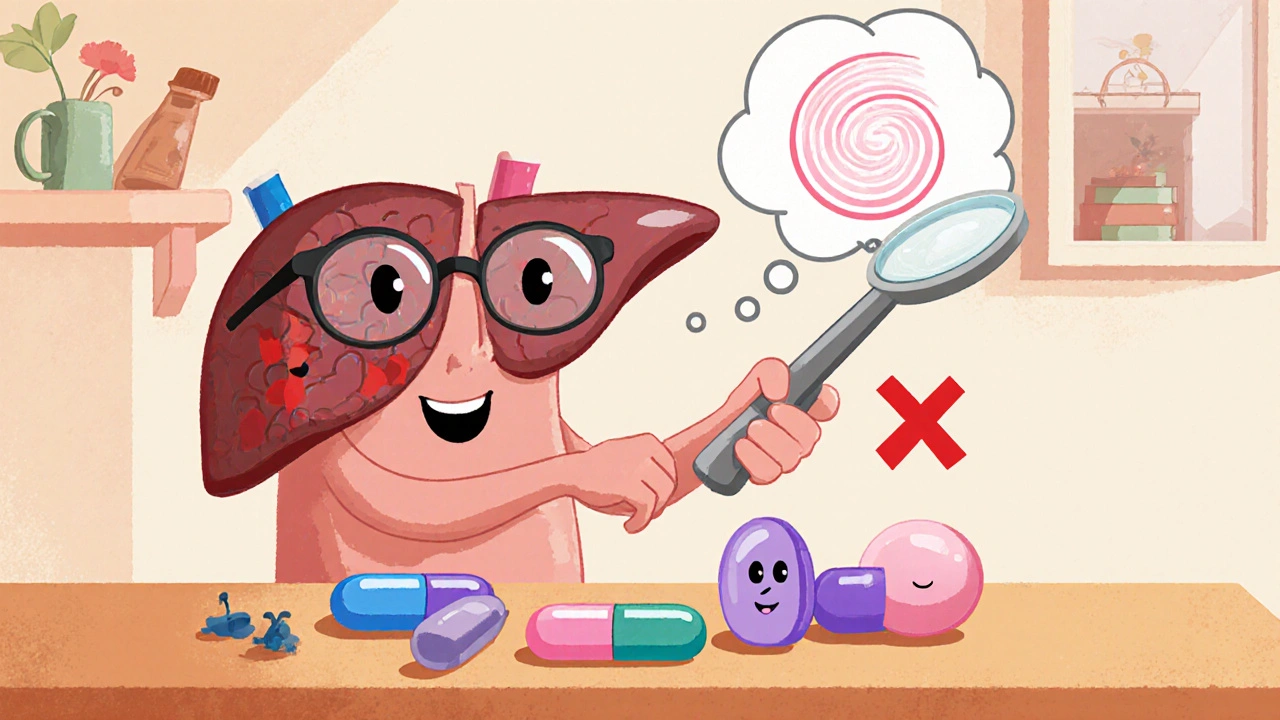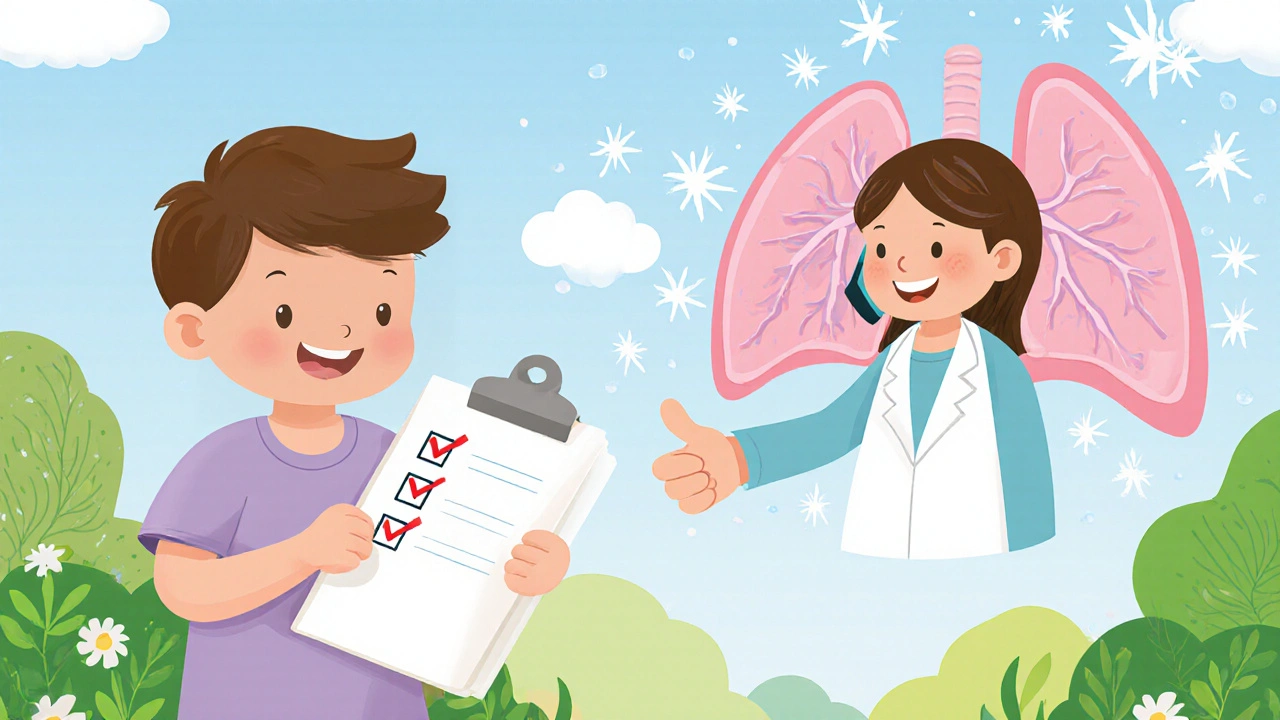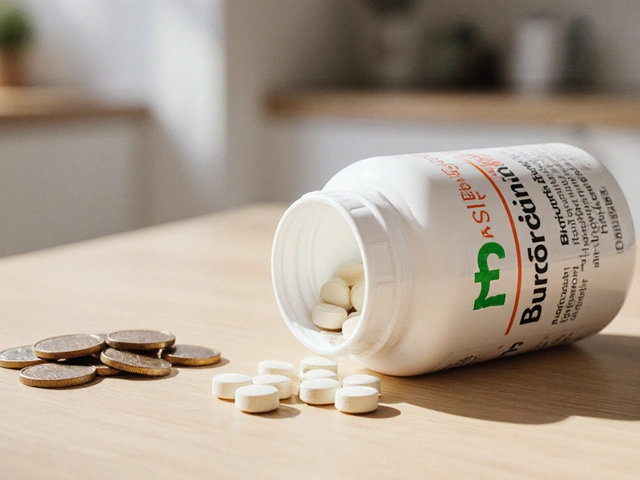Bromhexine Medication Interaction Checker
Check for Bromhexine Interactions
Select medications you're currently taking to see if there are potential interactions with bromhexine.
Interaction Results
Select medications to see interaction results.
When you start taking Bromhexine is a mucolytic used to thin mucus in the lungs and make coughing more effective, it’s smart to know which other medicines could mess with its action. Skipping a warning label or a quick chat with your pharmacist can turn a simple cough remedy into a headache, a rash, or even a dangerous bleed. Below you’ll find a straight‑forward rundown of the drug classes you should keep clear of while you’re on bromhexine, plus what to do if you’re already on a combination.
Key Takeaways
- Bromhexine is mainly broken down by the liver enzyme CYP2D6.
- Strong CYP2D6 inhibitors (e.g., fluoxetine, paroxetine, quinidine) can raise bromhexine levels and increase side‑effects.
- Anticoagulants such as warfarin may heighten bleeding risk when taken together.
- Avoid simultaneous use of anticholinergic drugs that can worsen dry‑mouth and constipation.
- Always tell your doctor about every prescription, OTC product, and supplement before starting bromhexine.
What is Bromhexine and How Does It Work?
Bromhexine belongs to the class of mucolytics, which means it helps break down the long, sticky strands of mucus that build up during colds, bronchitis, or chronic obstructive pulmonary disease (COPD). It does this by stimulating the production of serous mucus-a thinner, more watery fluid-that dilutes the thick, gel‑like secretions. The result is easier clearance of mucus and a less painful cough.
Once swallowed, bromhexine is absorbed quickly and travels to the lungs. About 40‑50% of the dose is metabolised in the liver, primarily by the enzyme cytochrome P450 2D6 (CYP2D6). Because its clearance depends on that enzyme, any drug that blocks or competes for CYP2D6 can push bromhexine levels higher than intended.
Why Drug Interactions Matter
Most people think a cough syrup can’t cause trouble, but interacting drugs can change how fast bromhexine is cleared, how strongly it binds to lung tissue, or even amplify its side‑effects (like nausea, abdominal cramps, or rare allergic reactions). In worst‑case scenarios, an interaction could lead to:
- Excessive sedation when combined with antihistamines.
- Increased bleeding if you’re on warfarin or other anticoagulants.
- Heightened anticholinergic load, causing dry mouth, constipation, or urinary retention.
- Unpredictable dosing errors that may require medical attention.
Knowing the red‑flag combos lets you keep the cough under control without risking other health issues.

Medication Classes to Watch Out For
Below is a breakdown of the most common drug families that either block CYP2D6 or have overlapping side‑effects with bromhexine.
CYP2D6 Inhibitors
If a drug slows down CYP2D6, bromhexine stays in your system longer, and you may feel the usual side‑effects more intensely. The big hitters include:
- Fluoxetine - a selective serotonin reuptake inhibitor (SSRI) used for depression and anxiety.
- Paroxetine - another SSRI with strong CYP2D6 inhibition.
- Quinidine - an anti‑arrhythmic that’s a classic CYP2D6 blocker.
- Terbinafine - an oral antifungal for nail infections.
When you’re on any of these, the safest move is to ask your prescriber whether a lower bromhexine dose or an alternative cough medicine is better.
Anticoagulants and Antiplatelet Drugs
Bromhexine itself doesn’t thin blood, but it can irritate the stomach lining in some people. Pair that irritation with a blood‑thinner and you raise the odds of a bleed, especially in the gastrointestinal tract.
- Warfarin - a vitamin‑K antagonist used for long‑term clot prevention.
- Direct oral anticoagulants (DOACs) like apixaban, rivaroxaban, and dabigatran.
- Low‑dose aspirin (81 mg) taken for cardiovascular protection.
If you’re already on an anticoagulant, keep an eye on any new bruising, dark stools, or unusual bleeding and let your doctor know right away.
Anticholinergic Medications
Both bromhexine and anticholinergics can dry out mucus. Adding another dry‑mouth culprit may make the cough feel worse, not better.
- First‑generation antihistamines such as diphenhydramine.
- Tricyclic antidepressants like amitriptyline.
- Bladder‑control drugs such as oxybutynin.
Switching to a second‑generation antihistamine (e.g., cetirizine) or timing the doses several hours apart can reduce the problem.
Other Respiratory Drugs
Sometimes you’ll be on multiple lung‑related medicines. While most combos are fine, a few deserve caution:
- Beta‑agonists (e.g., salbutamol) - typically safe, but excessive dosing may increase heart rate when combined with high bromhexine levels.
- Other mucolytics (e.g., N‑acetylcysteine) - can cause additive nausea or gastrointestinal upset.
Talk with your respiratory therapist to coordinate timing and avoid taking both mucolytics within the same hour.
Quick Reference Table
| Interaction Type | Example Drugs | Potential Effect | Recommendation |
|---|---|---|---|
| CYP2D6 inhibition | Fluoxetine, Paroxetine, Quinidine, Terbinafine | Higher bromhexine plasma levels → nausea, abdominal cramps | Consider dose reduction or alternative cough suppressant |
| Anticoagulant synergy | Warfarin, Apixaban, Rivaroxaban, Low‑dose aspirin | Increased risk of gastrointestinal bleeding | Monitor INR (if on warfarin) and watch for bleeding signs |
| Anticholinergic load | Diphenhydramine, Amitriptyline, Oxybutynin | Dry mouth, thickened mucus, constipation | Prefer second‑gen antihistamines; space dosing by 4‑6 hrs |
| Combined mucolytics | N‑acetylcysteine, Carbocysteine | Excessive GI upset (nausea, vomiting) | Use only one mucolytic at a time unless directed by physician |
| Beta‑agonist overlap | Salbutamol, Formoterol | Potential tachycardia if bromhexine level high | Monitor heart rate; separate doses if needed |
How to Manage a Potential Interaction
- Make a complete medication list - include prescription drugs, over‑the‑counter pills, herbal supplements, and even vitamins.
- Check each item against the table above. If you spot a match, note the interaction type.
- Contact your prescriber or pharmacist. They can adjust the bromhexine dose, swap the interacting drug, or suggest a timing strategy.
- If you notice new symptoms (e.g., unusual bruising, stomach pain, severe cough), seek medical advice promptly.
- Keep a short diary for the first week - write down the time you take bromhexine and any other medication, plus any side‑effects you feel. This helps your clinician see patterns.
Remember, the goal isn’t to stop life‑saving medicines; it’s to fit bromhexine safely into the regimen you already have.

Frequently Asked Questions
Can I take bromhexine with my daily flu vaccine?
Yes. The flu vaccine works by stimulating your immune system, while bromhexine acts locally in the lungs. No known pharmacokinetic interaction exists, so they’re safe to use together.
Is it okay to combine bromhexine with a herbal cough syrup that contains ivy leaf?
Generally fine. Ivy leaf works as a bronchodilator, while bromhexine thins mucus. However, watch for any unexpected stomach upset, as both can be mildly irritant.
What should I do if I accidentally take a CYP2D6 inhibitor and bromhexine together?
If it’s a one‑time slip, monitor for nausea or abdominal cramps. If symptoms appear, call your pharmacist. For regular co‑use, ask your doctor about lowering the bromhexine dose or switching to a different cough remedy.
Does bromhexine affect blood sugar levels?
No direct effect on glucose metabolism has been reported. However, if you’re on diabetes medication that interacts with CYP enzymes, double‑check with your clinician.
Can children under 12 use bromhexine?
Most formulations are approved for children over 2 years, but the dose is weight‑based. Always follow the pediatric dosing chart on the label or ask a pharmacist.
Next Steps for a Safe Cough Treatment
Before you pop that next tablet, take a minute to run through this quick checklist:
- Do you take any antidepressants, antifungals, or heart medications? Flag them.
- Are you on a blood thinner? Ensure your INR (if on warfarin) is in range.
- Have you listed every supplement, including St. John’s wort, which also hits CYP2D6?
- Did you read the label for dosage limits (usually 8 mg three times a day for adults)?
If anything feels uncertain, a 2‑minute call to your pharmacy can save you a trip to the emergency department. Staying informed is the easiest way to keep that cough from turning into a bigger problem.
Bottom Line
While bromhexine is a handy over‑the‑counter option for thick mucus, it shares the metabolic pathway CYP2D6 with a handful of commonly prescribed drugs. Knowing which medications to avoid-or at least to space out-lets you enjoy clear breathing without unwanted side‑effects. Keep an up‑to‑date medication list, ask your health‑care team when you start a new drug, and you’ll stay one step ahead of any interaction pitfalls.






4 Comments
Thanks for the quick rundown, super helpful!
Really nice summary i love how it cuts to the chase
the tip about checking warfarin levels is gold
definitely gonna double check my meds next time i grab bromhexine
I appreciate the thorough table you provided; it makes spotting potential problems much easier. It’s especially useful to see the specific CYP2D6 inhibitors listed side by side with the recommended actions. For anyone on antidepressants like fluoxetine, a quick dose adjustment can prevent that nasty nausea you mentioned. Also, keeping track of over‑the‑counter antihistamines is a smart move, as they’re often overlooked. Remember that timing doses several hours apart can mitigate anticholinergic load without having to stop either drug entirely. Overall, a solid guide for patients and clinicians alike.
Look, the pharma giants don’t want you to know that they stealthily push bromhexine combos to trap you in a cycle of side‑effects. Every time you take an SSRI with it, they’re secretly collecting data on how your body reacts, feeding the algorithm that decides who gets the next experimental drug. It’s not just about CYP enzymes; it’s about control. If you think the warning label is enough, you’re being sold a lie. Stay vigilant, question every new prescription, and demand full transparency from your healthcare providers.